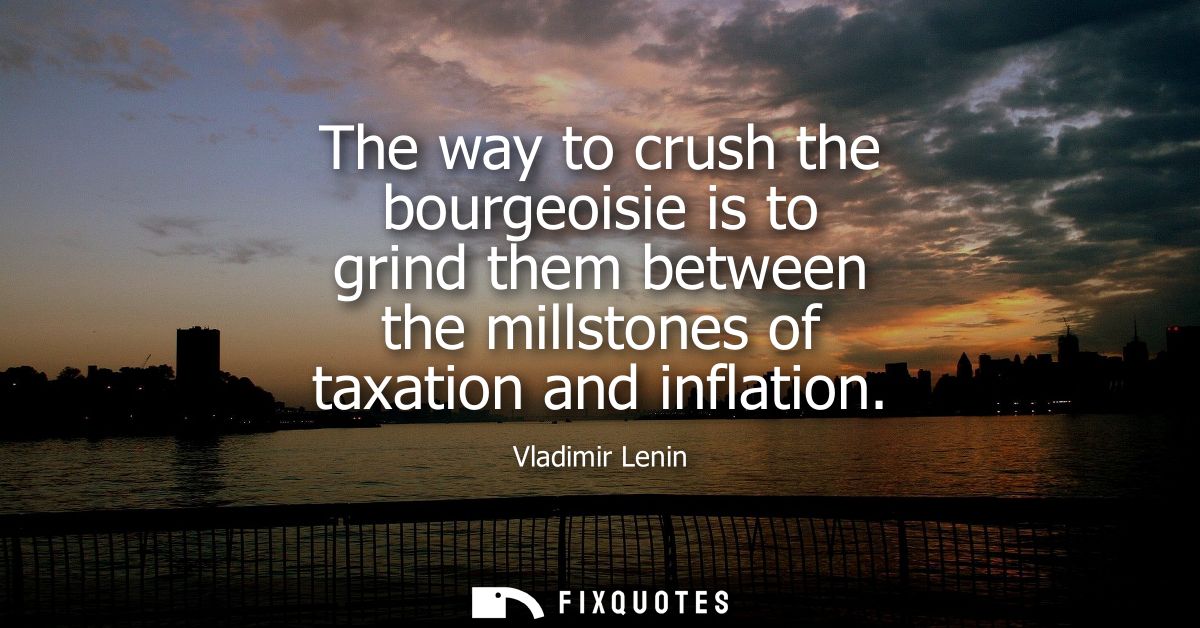"The way to crush the bourgeoisie is to grind them between the millstones of taxation and inflation"
About this Quote
Vladimir Lenin’s assertion regarding the crushing of the bourgeoisie through the dual pressures of taxation and inflation reveals a strategic vision for undermining the economic foundations of the capitalist class. Rather than relying solely on overt expropriation or revolutionary violence, Lenin points toward fiscal policy and monetary manipulation as more subtle yet effective tools of class struggle. Taxation represents a direct means of extracting wealth from the bourgeoisie, diminishing their disposable income, limiting their capacity to invest, and disrupting the accumulation of capital. Heavy or progressive taxation targets the affluent strata, redistributing resources to the proletariat or funding the social and state apparatuses aligned with socialist aims.
Inflation, on the other hand, operates as an indirect weapon. By eroding the value of currency, inflation slowly depletes the real wealth of those with substantial monetary holdings, such as the bourgeoisie, while simultaneously reducing the real burden of debts which might be widespread among workers or the state. For the capitalists, inflation introduces uncertainty, undermines long-term investments, and can lead to a loss of economic stability necessary for the preservation of private property and profit. The consequences of these twin pressures, taxation draining wealth ahead of production, and inflation quietly gnawing away at stored fortunes, create a “grinding” effect, evoking the relentless operation of millstones crushing grain. Private capital is stripped of both immediate returns and future security, discouraging investment, accumulation, and entrepreneurship associated with the bourgeois class.
Lenin’s words encapsulate a fundamental principle of Marxist economic strategy: weakening the structural underpinnings of capitalism not only through revolution but also via state policies that systematically sap the material strength and influence of the old ruling class. The imagery of millstones suggests a process that, while perhaps gradual, is inexorable, once set in motion, it continually diminishes the power of the bourgeoisie until their class position is irretrievably broken and cleared away for the emergence of socialist relations.
More details
About the Author

